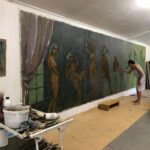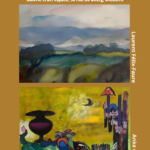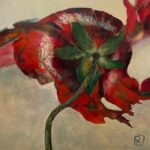ALBERT VAN GULIK’s book
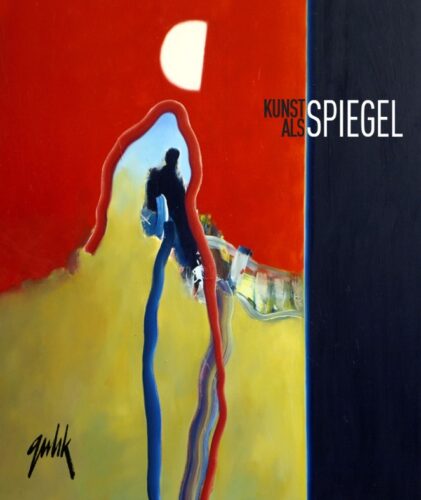
A few weeks ago, I read the book the painter Albert van Gulik (see blog) has written about his life as an artist. I was impressed by the quality and the pure artistry of the edition. It is not an ordinary book but a real piece of art a bibliophile and art lover would be happy to pay the price for and proud to have in his collection. It is extremely well written in Dutch, Albert’s mother tongue, and the title is Kunst als Spiegel, in other words art as a mirror. An English translation is under consideration.
Although the purpose of my blog series is to write a one-off account of my meetings with artists whose work I like, in this case there was a good reason to make an exception. The book gives an extremely interesting run-through of the life of a painter and why he, in this case Albert, has taken to brush and canvas to express his feelings and deeper concerns in life over a period of 50 years. More importantly, to a certain degree it helps to understand, according to the author, why art is so important especially in times of dangerous rationalisations that obscure the truth. People often believe that art is a matter of some higher form of inspiration. When you get to know artists better you realise that they are quite down to earth and that their social, political, medical, economical and metaphysical concerns are the same as those of any ordinary person. However, there is a difference. They have other tools as a means of expressing themselves and they don’t rely on analysing situations and offering solutions by using reason alone. “The heart has its reasons which reason cannot know” goes the well-known saying by the French philosopher Blaise Pascal. I like to believe that the quotation could very well apply to what is revealed by art. That is what Albert’s book is all about and why I have asked him to sum up its contents in his own words in English and explain why he has chosen to publish it under the title Kunst als Spiegel, art as a mirror.
Here follows Albert’s response in writing :
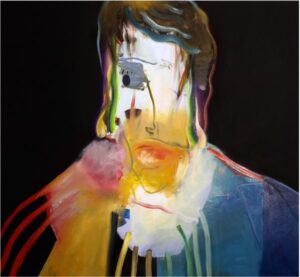
“My painting combines abstraction and reality in order to express the fusion between man, woman and nature”
“Dear Laurent,
You asked me to give a résumé of the book and why I published it under the title Art as a Mirror. Well, the book consists of three parts. The first part is the correspondence with Joyce Tulkens a Dutch painter/writer/gallery owner in Singapore. She at one point came up with the idea of producing an edition of my letters to her which were often accompanied by a photograph of a painting and in which I elaborated on that particular canvas. She found this an attractive
and enlightening form of talking about art. The second part is a selection of my paintings without accompanying letters. Finally, the third part is a selection of my correspondence with Maria van der Wijst, a Dutch painter who I met again after many years and with whom I continued my correspondence in the same way.
The choice of the title Art as a Mirror is a result of my attitude towards painting. Many paintings today have degenerated into objects, “things”, whereas my strong preference is for an image, as it were a mirror, in which we can also find ourselves. In this way the potential is realised to paint about a man in relation to his partner and in relation to his surroundings and nature in a direct and “imaginative” form.
Finally, as to your question of the red thread in my work. I can say that to bring together the long-standing opposition of realism versus abstraction in a meaningful coherence is to be seen as a leading principle. The dynamic constellation is not only a true reflection of man’s perception of life, but also a particularly adventurous new path of painting. The book attempts to be an example of this.”
To order a copy of Albert’s book go to website: albertvangulik.com
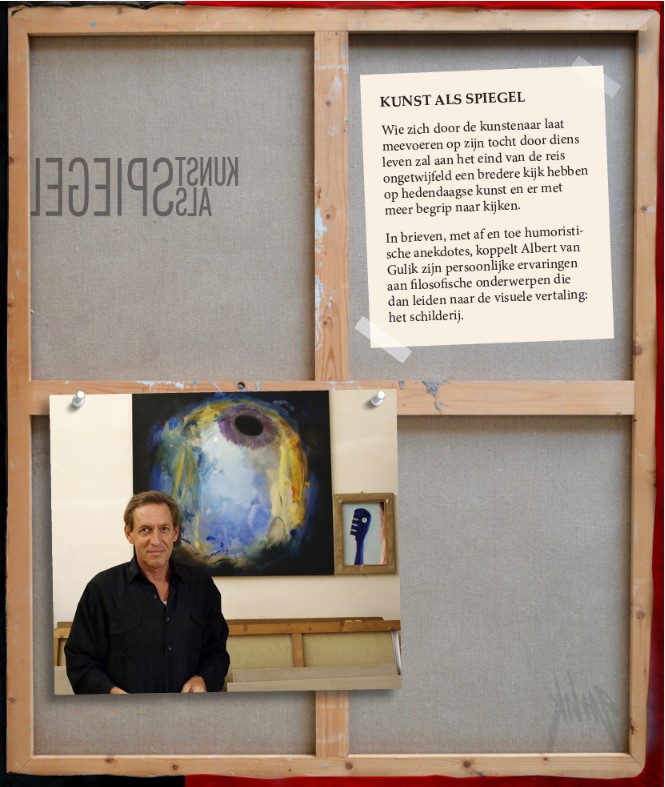
Posted in: Art
